We have much more to do and your continued support is needed now more than ever.
Conservation Work Benefits from Many Hands
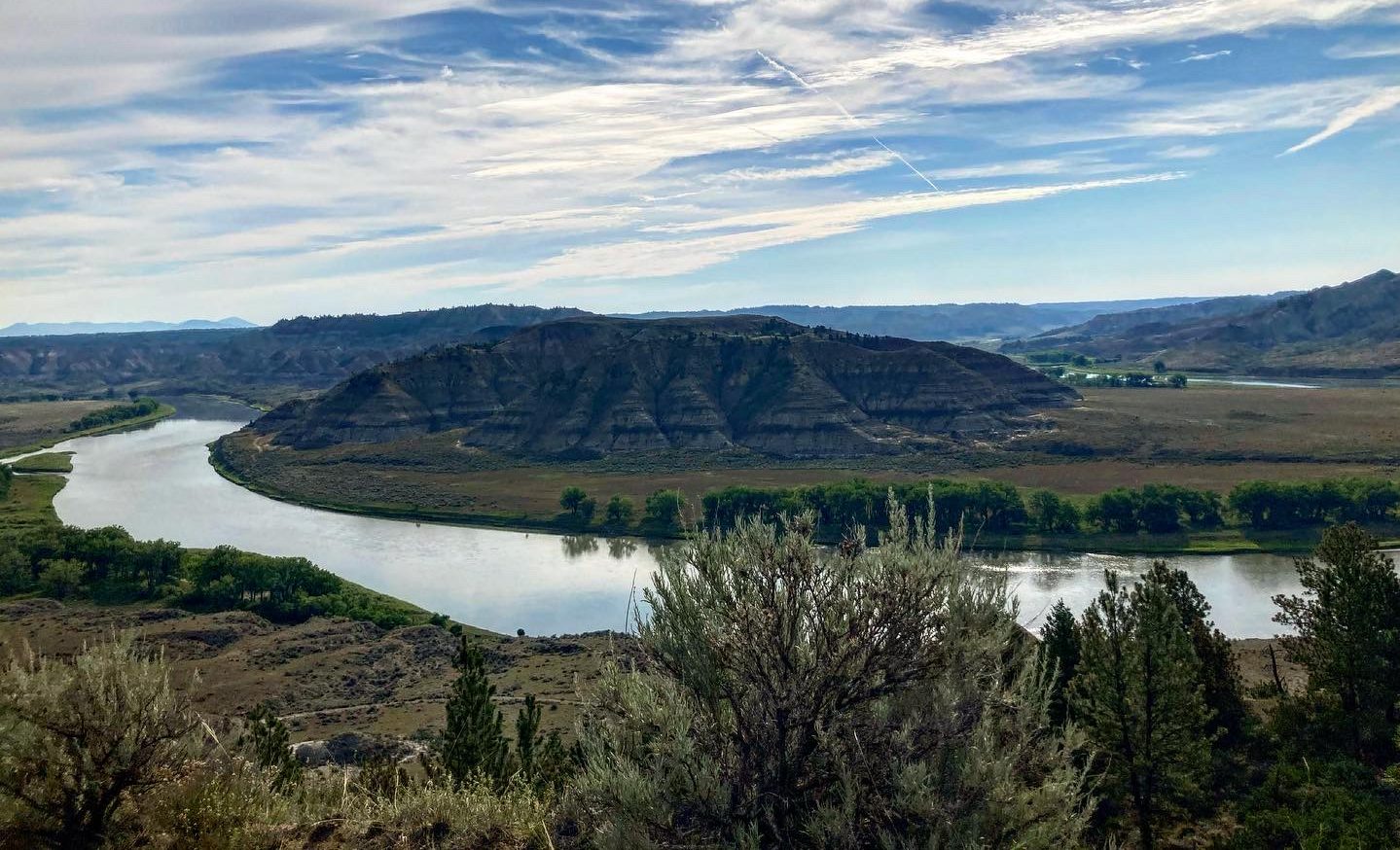
We’ve been at it again! A summer spent in the field carrying out focused restoration work to retain water on the landscape for longer. Together with volunteers, we’ve covered a lot of ground, putting the building blocks in place to restore critical wildlife habitat in riparian areas.
What might surprise many people is that beavers are our mentors. And we’re not alone. Folks across the nation are learning lessons from beavers, including a rancher in Nevada, who was featured in the New York Times. We’ll own it: We’re proud to be among the crowd taking lessons from one of nature’s wisest creatures.
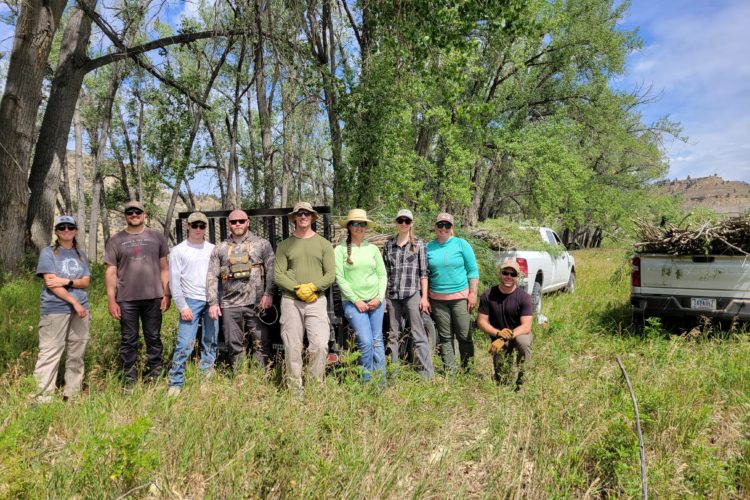
Nature knows the way, and we’re learning to listen. If we pay close attention, we’ve discovered she’ll tell us which direction to take and how we can restore places to benefit both wildlife and communities. It’s all about using low-tech restoration practices, and working with natural elements such as rocks, willows, logs, and sticks to build dams, like beavers would.
Surprised? You shouldn’t be. These practices are tried, tested, and monitored over time.
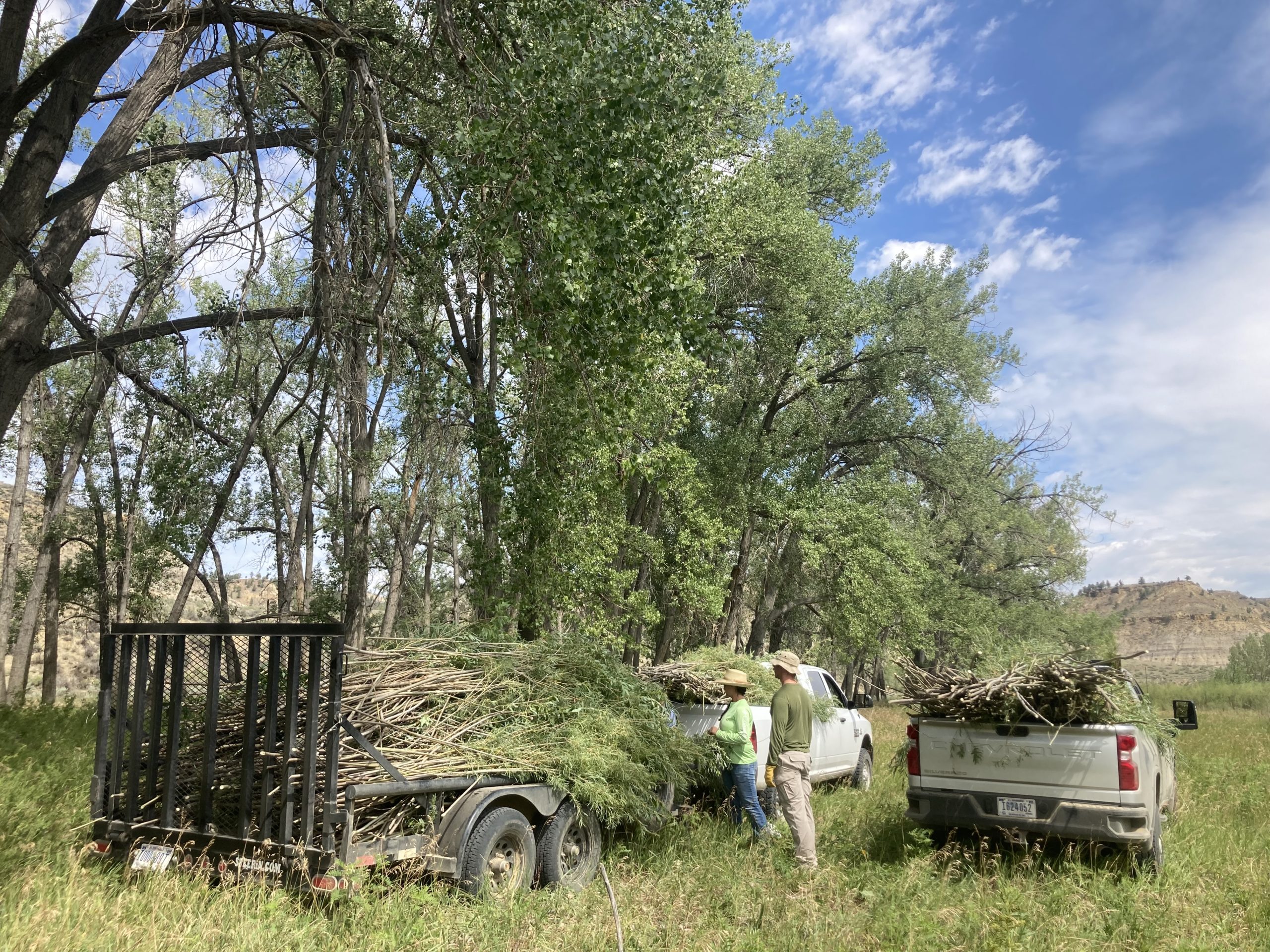
Recovering water: a win-win-win
Restoring prairie streams to their natural function is a great place to start. We rely on low-tech restoration practices to help retain water on the landscape later in the season. It not only keeps the habitat greener and wetter, it provides excellent habitat for the Greater sage-grouse – and many other species of wildlife. It’s a win-win-win. We can never forget, water is life, for all living creatures both large and small.
Volunteers: A force in action
The photos don’t lie. We were a force in action, cutting and gathering multiple truckloads and trailers full of willows that were hauled and staged at two different project sites: Rose Creek outside Winifred, Montana, and Reed Coulee in the Upper Missouri Breaks National Monument.
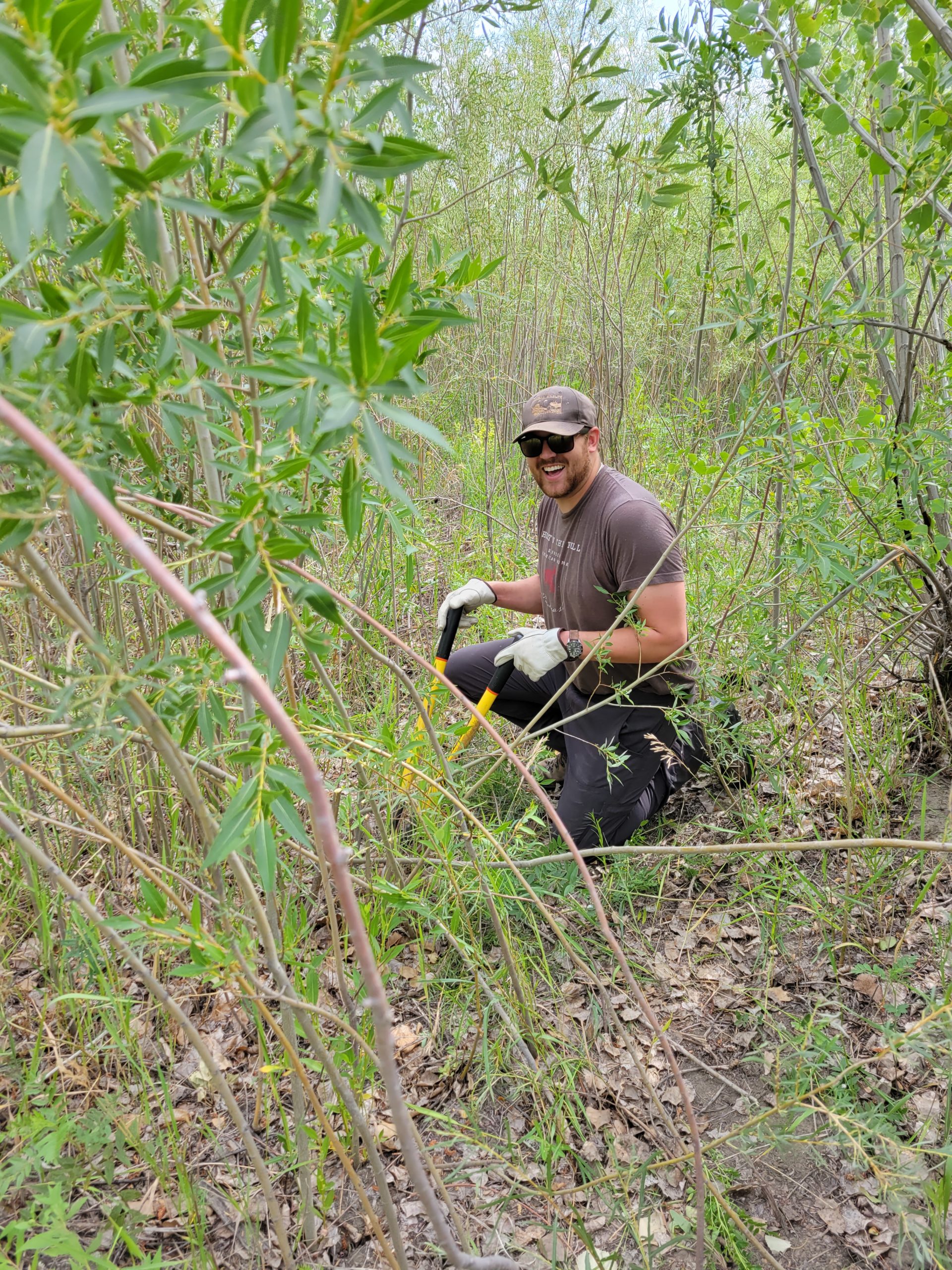
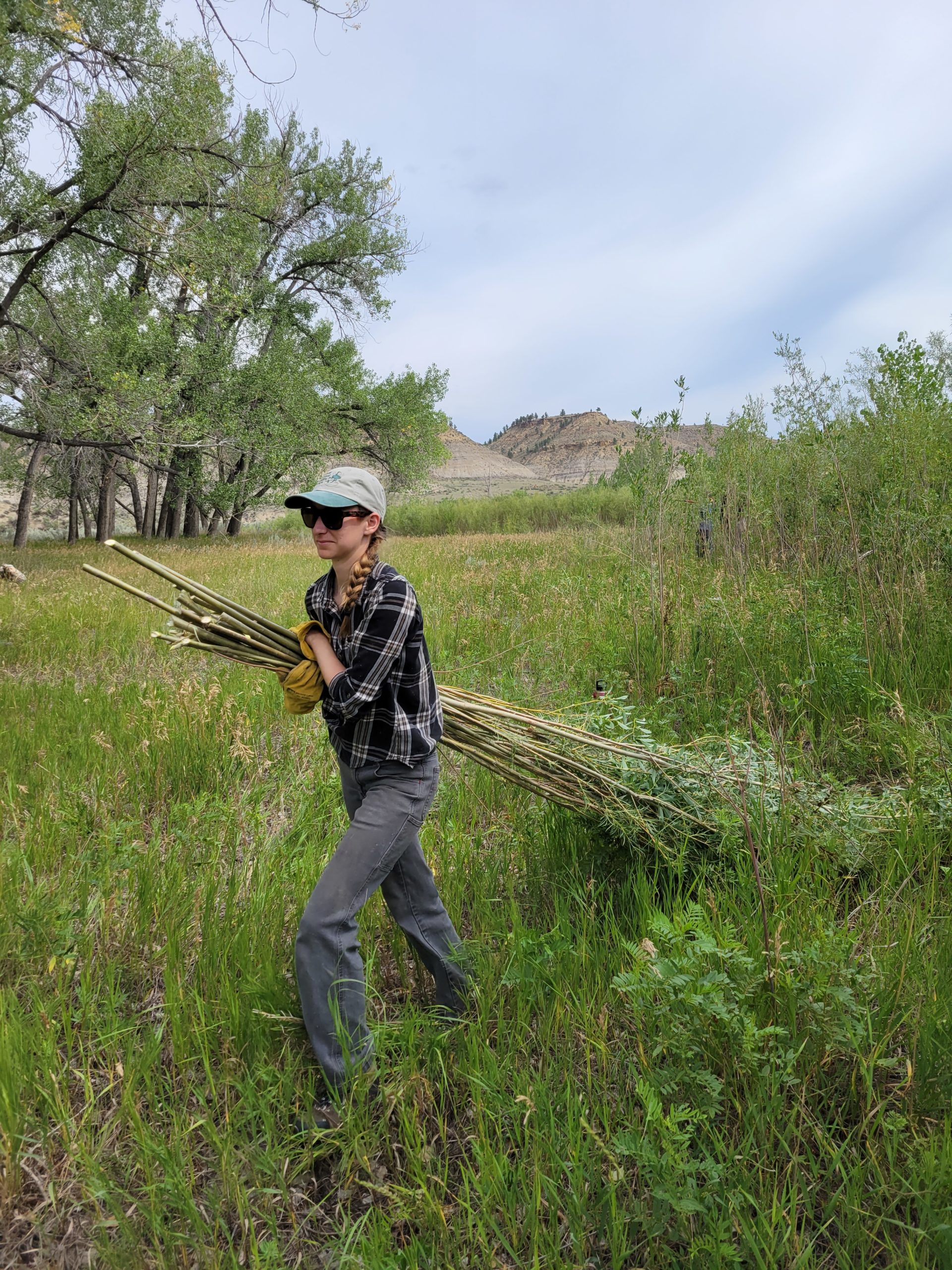
Volunteers camped at a dispersed campsite on BLM land overlooking the Upper Missouri Breaks National Monument and eagerly started their day early to beat the blistering summer heat. Camaraderie and meeting new people is a part of the volunteer experience, as is fun. A few volunteers took advantage of swimming in the Missouri River, scouting for elk, and resting beneath shaded trees with a good book.
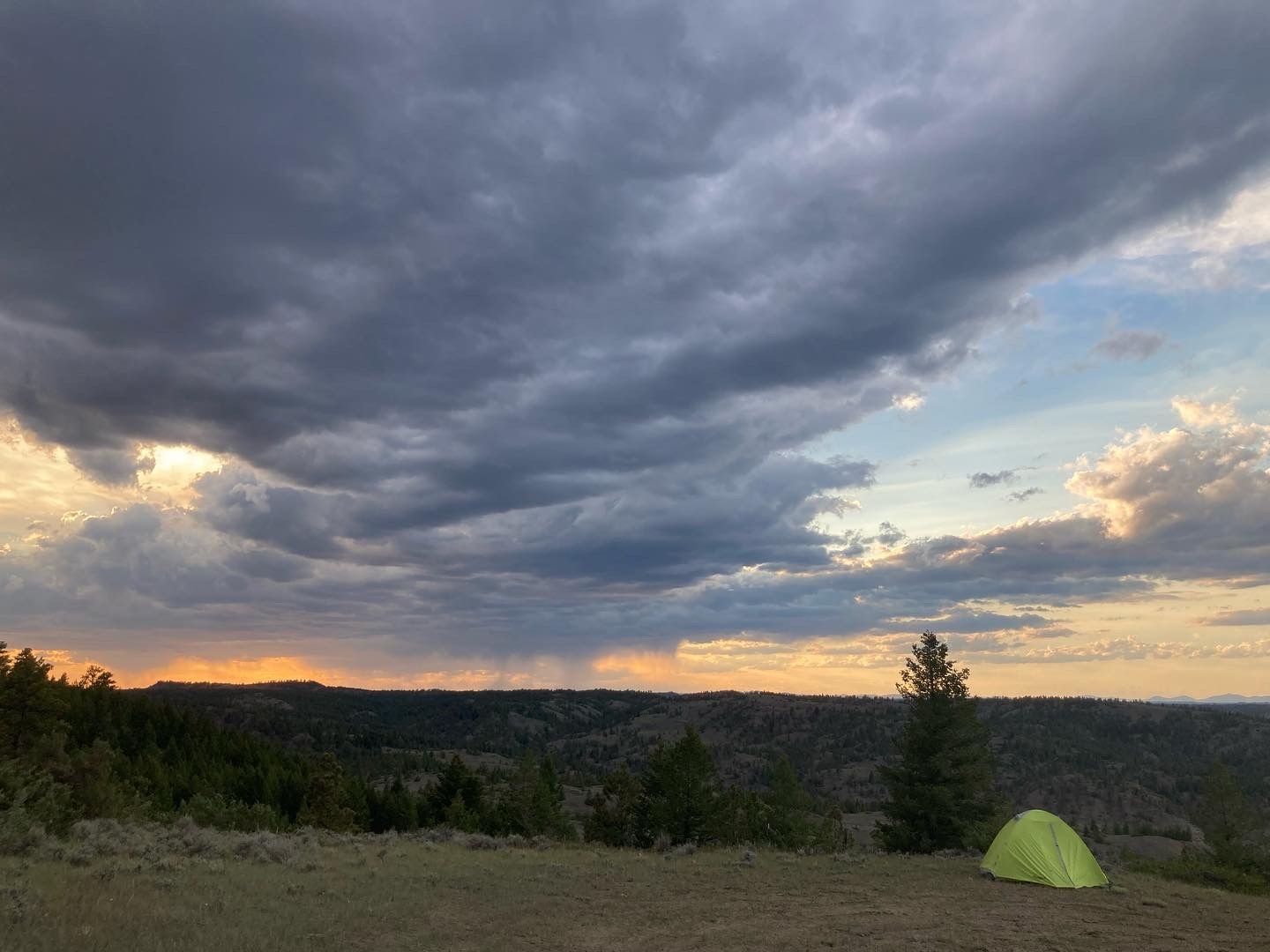
Having completed the first phase of the project in 2021, we’re delighted to have begun Phase 2 of a multiyear collaborative effort to demonstrate the use of low-tech restoration techniques in these grassland systems. Once volunteers finished up in July, crews from Anabranch Solutions, LLC began building beaver dam analogues with the willows we’d gathered. We’re excited to report: Mission accomplished!
Many hands make fun work
Conservationists of all stripes and people across sectors and communities would agree: if the Greater sage-grouse are thriving, then the land is doing well. This one bird is an important indicator species, telling us if the ecosystem is healthy and resilient.
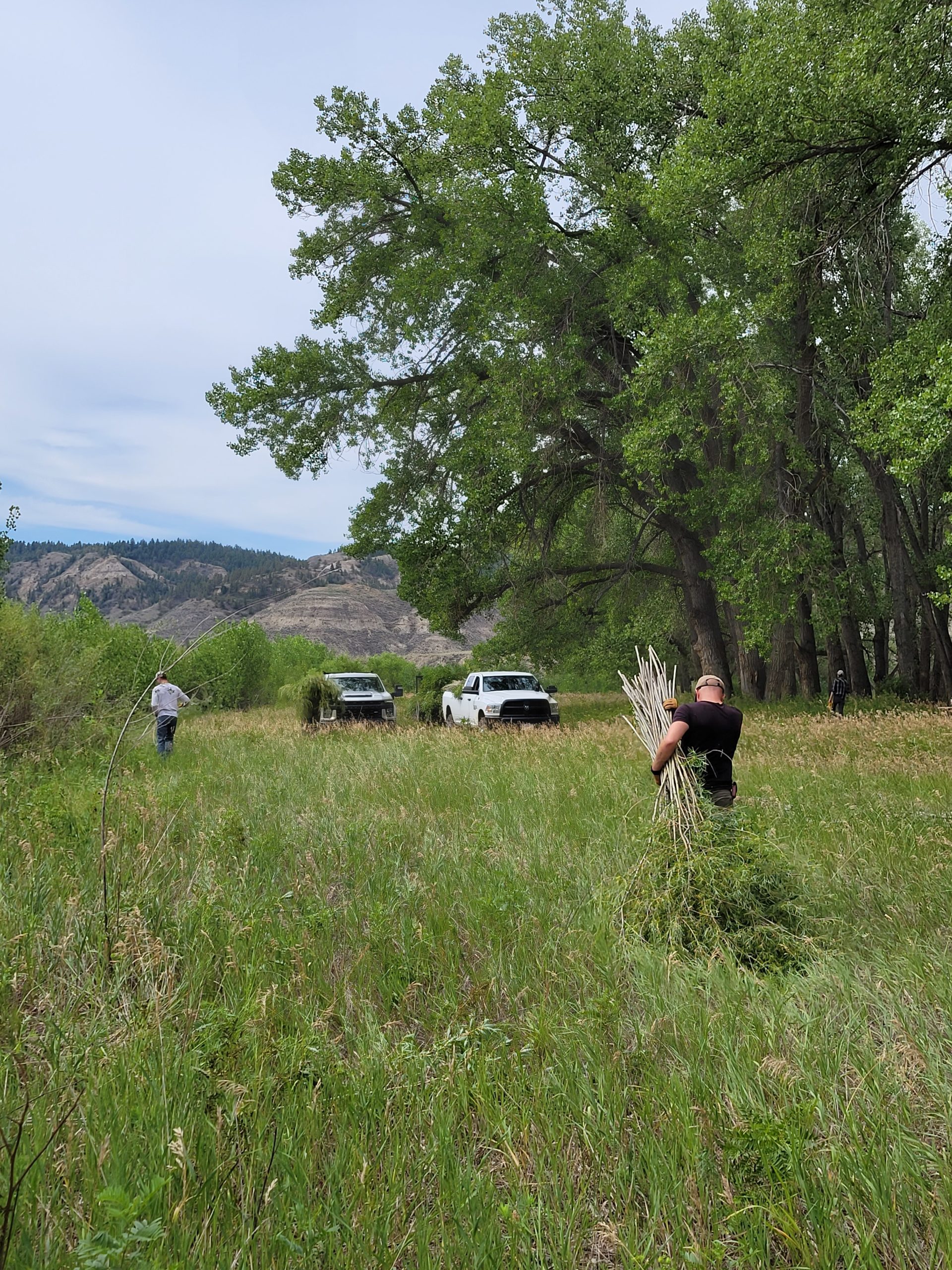
Last year, you may remember that Montana Wildlife Federation (MWF) supported low-tech restoration projects in Eastern Montana alongside multiple partners- the National Wildlife Federation (NWF) and the Bureau of Land Management (BLM). Funding for these riparian restoration projects was sourced from the National Fish and Wildlife Foundation and National Wild Turkey Federation.
We said it a year ago and we’ll say it again — good conservation work takes many hands. In the final year of this collaborative conservation project, those words rang true. We have a feeling they’ll continue to ring loudly and hopefully, together, we’ll all learn, continue to work with each other, and create bridges where there were none before — perhaps literally but we mean it figuratively!
It’s an exciting moment for the region. The story of dry, eroding streams in the Missouri River grasslands is starting to change and shift, like a waterway naturally does, because of the efforts of many partners and many committed volunteers, who traveled hundreds of miles to support this work. The representation was diverse, from One Montana and the Master Hunter Program to volunteers from years past who love the Missouri River Breaks landscape.
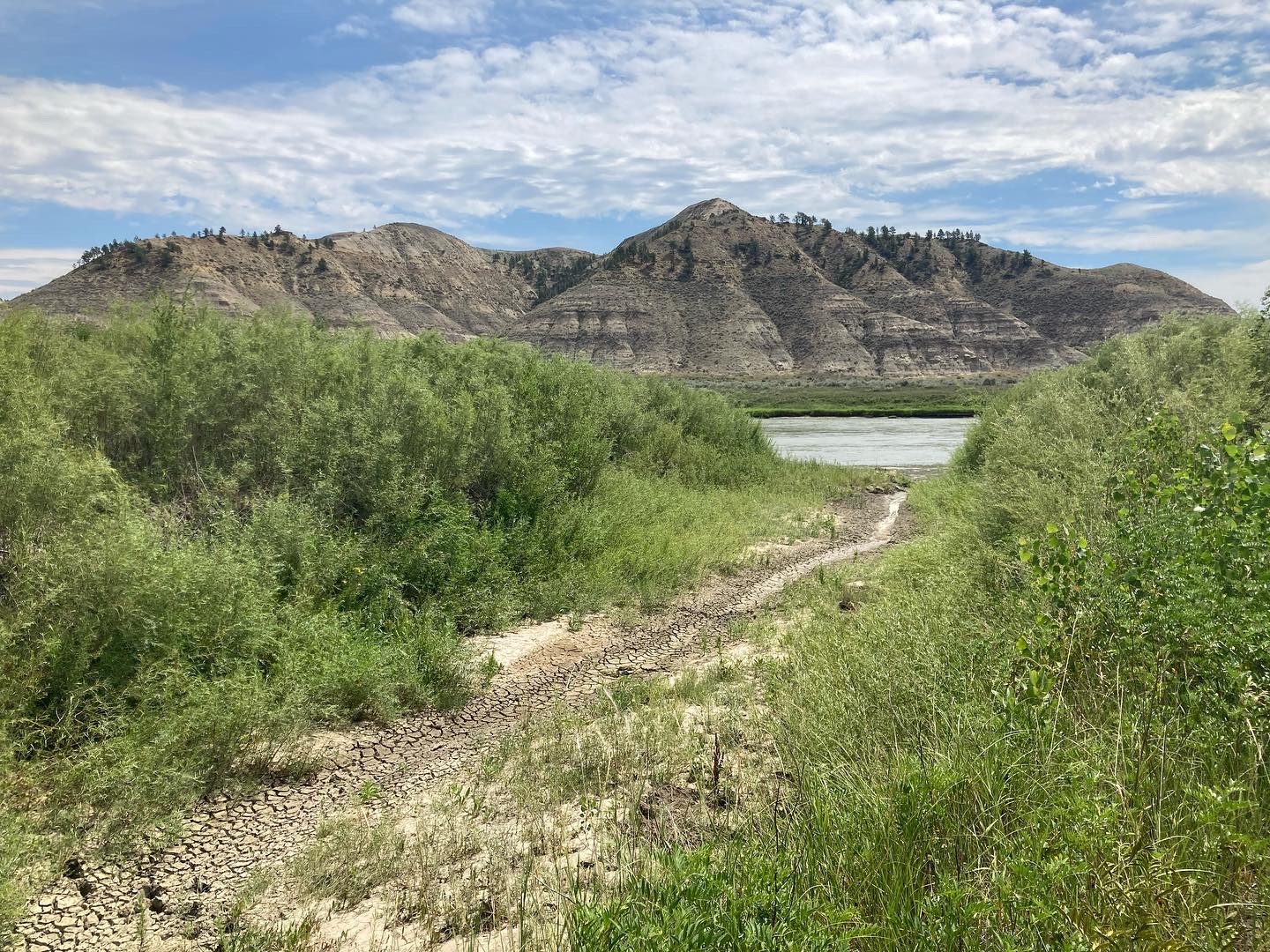
Other low-tech restoration projects are ongoing and we have more plans in store. Next spring we expect to share lessons learned and news of how the beaver dam analogues are functioning and impacting the landscape. Meanwhile, we were delighted to discover that the world is beginning to discover the power of beavers — and we’re doing our part to help them, and low-tech restoration practices thrive.





















